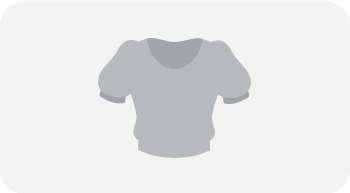Have you ever felt like your baby goes from calm to overtired in the blink of an eye? You’re not alone. One of the most helpful things you can learn as a new parent is how to spot your baby’s natural sleep cues — those little signs that your baby is ready to rest.Catching these cues early can make all the difference between a smooth bedtime and a fussy, overtired baby who struggles to fall asleep. In this guide, we’ll walk you through how to recognize when your baby is tired and share gentle tips to help you respond.💡 Curious why timing matters so much? Learn more in our post: Understanding Your Baby’s Sleep Cycle.
Table of contentUpload
🌿 Why Baby Sleep Cues Matter More Than the Clock
While some parents rely on strict schedules, babies don’t always follow the clock. Instead, they give us subtle signals when they’re ready to wind down.
Responding to these cues before your baby becomes overtired helps make falling asleep easier and can improve both the length and quality of their naps and nighttime sleep.When babies miss their sleep window, they can become overstimulated — leading to more fussiness, shorter naps, and more night waking.Learn how overtiredness affects sleep here: Signs of an Overtired Baby and How to Help.

👶 Common Baby Sleep Cues (By Stage of Tiredness)
Every baby is unique, but here are some common early and late sleep cues to watch for:
🟢 Early Sleep Cues (The Best Time to Start Wind Down):
- Yawning
- Rubbing eyes or ears
- Staring off or looking away
- Slower movements, less interest in play
- Red or flushed eyebrows
✅ Tip: Early cues are your best opportunity to begin your calming bedtime routine.
🟠 Late Sleep Cues (Signs of Overtiredness):
- Fussiness, crankiness
- Back arching or squirming
- Turning head away or pushing you away
- Jerky, frantic arm and leg movements
- Hysterical crying that’s hard to soothe
Once your baby reaches the late stage, it may take longer for them to settle. That’s why learning to catch the early cues is key.
🛏️ How to Respond When You See Sleep Cues
When you notice those early signs of sleepiness, try these gentle steps to help your baby settle:
🌙 1. Move to a Calm Sleep Environment
Dim the lights, turn on white noise, and reduce stimulation. Stick to your soothing routine — whether that’s a warm bath, feeding, rocking, or wrapping your baby in a soft Swaddle Blanket or cozy Bamboo Sleep Sack.
🍼 2. Follow Your Bedtime Routine (Even for Naps!)
A consistent routine signals to your baby that sleep is coming. Simple steps like cuddles, a song, or light massage help your little one relax.Need ideas? Don’t miss: How to Create a Bedtime Routine That Works.
🧸 3. Avoid Overstimulation
Limit bright toys, loud sounds, or playful tickling once you see sleep cues. Offer soft comfort items like a Bamboo Baby Blanket or dress your baby in breathable, soothing sleepwear like Convertible Footies & Pajamas.
📋 Sleep Cue Chart by Age (Awake Windows + Common Signs)
| Age Range | Awake Time Before Tired | Common Sleep Cues |
| 0–3 months | 45–90 minutes | Yawning, red eyebrows, zoning out |
| 3–6 months | 1–2 hours | Rubbing eyes, pulling ears, fussiness |
| 6–12 months | 2–3 hours | Clinginess, head-turning, eye rubbing |
(Remember: These are general guidelines — always follow your baby’s unique signals!)
💛 Final Thoughts: Trust the Cues, Not the Clock
Learning to recognize your baby’s sleep cues is one of the best ways to support healthy sleep without stress or struggle. It takes time to tune into your baby’s rhythms, but once you do, bedtime can feel easier and more peaceful for everyone.Looking for more gentle sleep tips? Explore:










